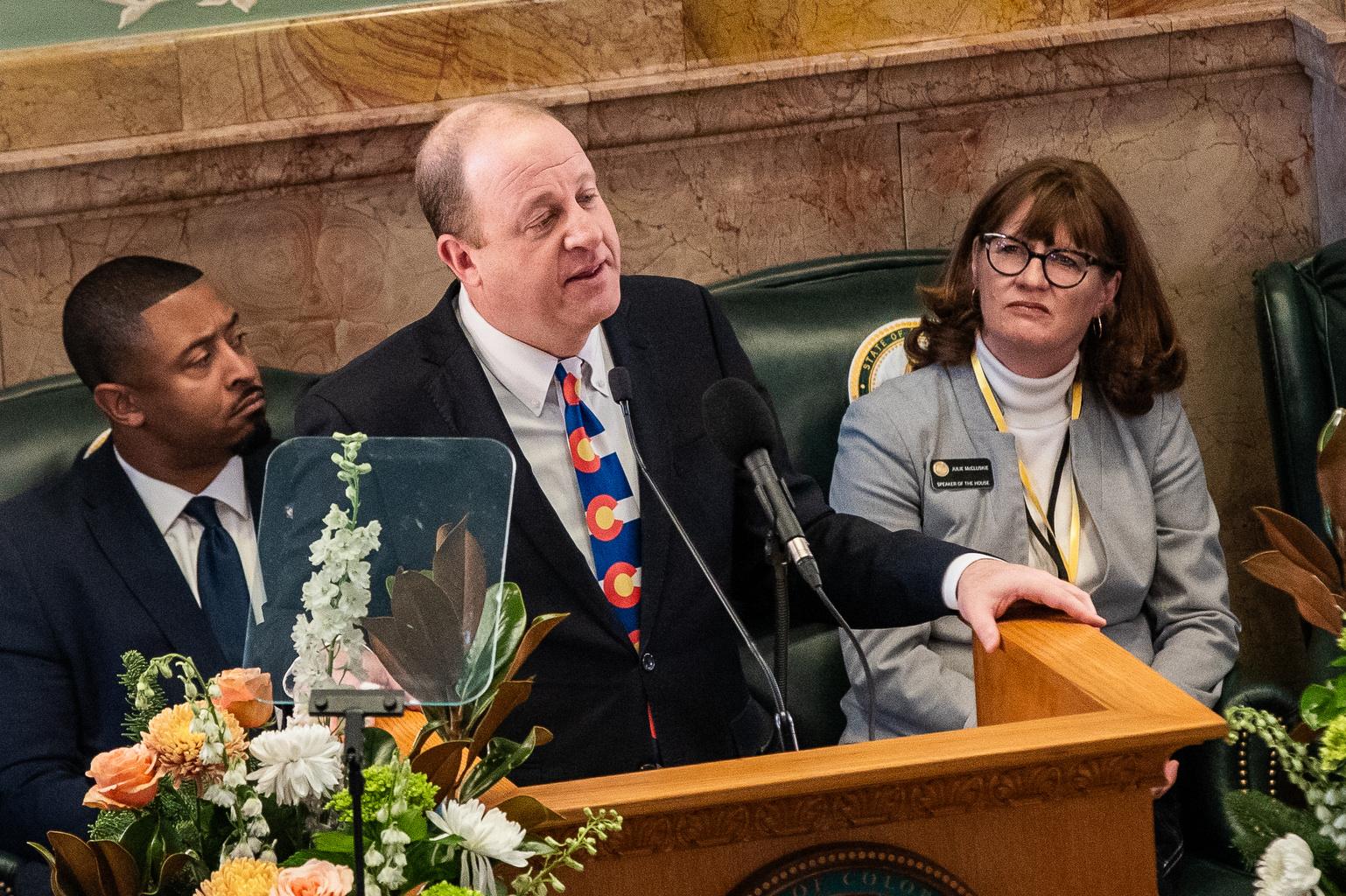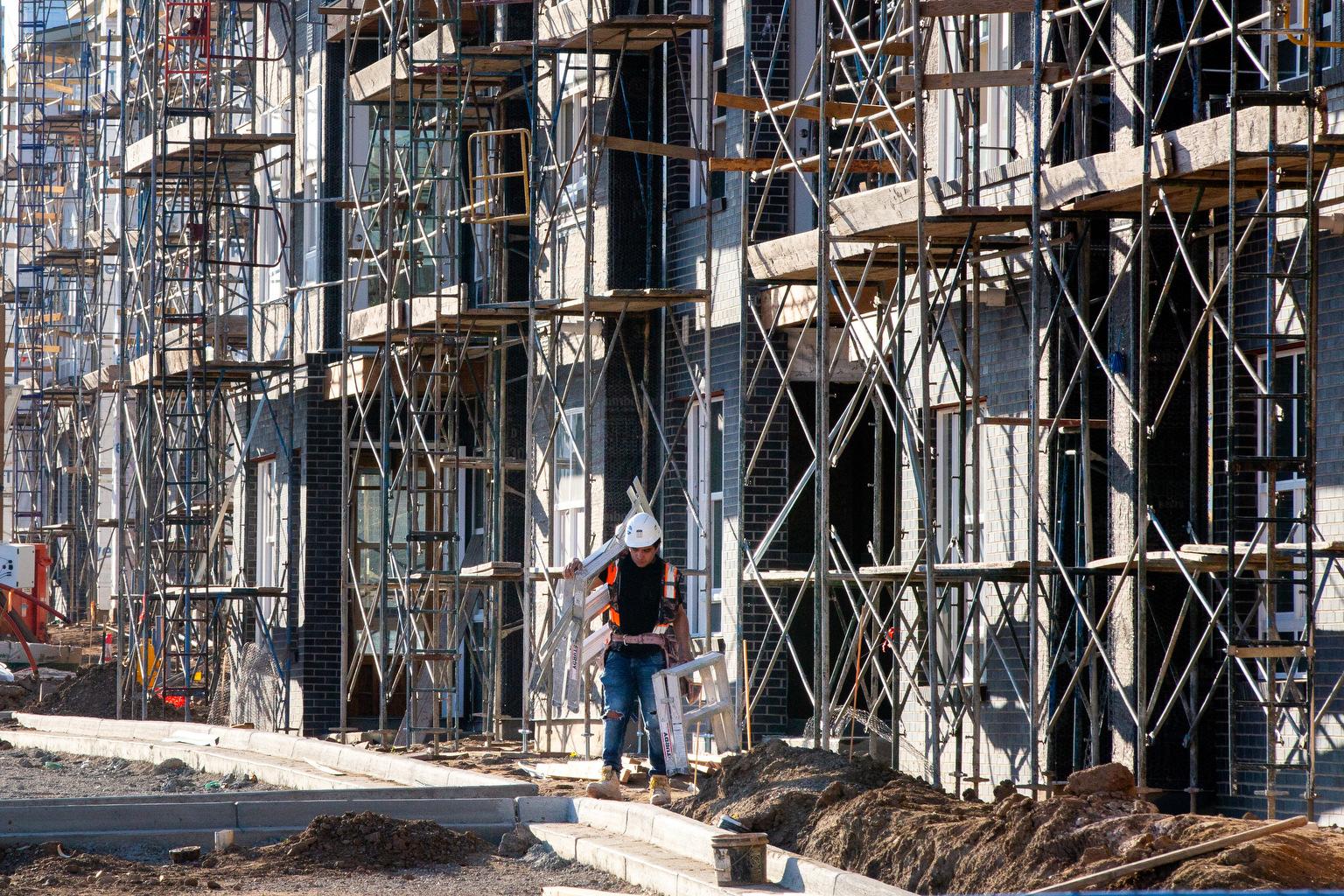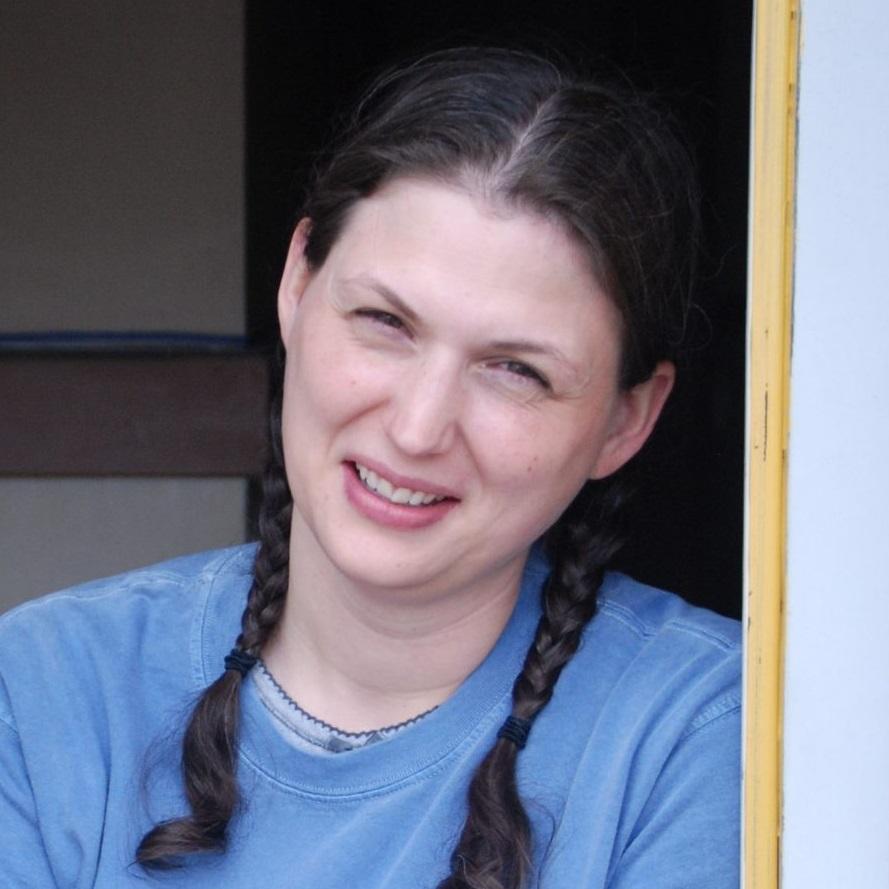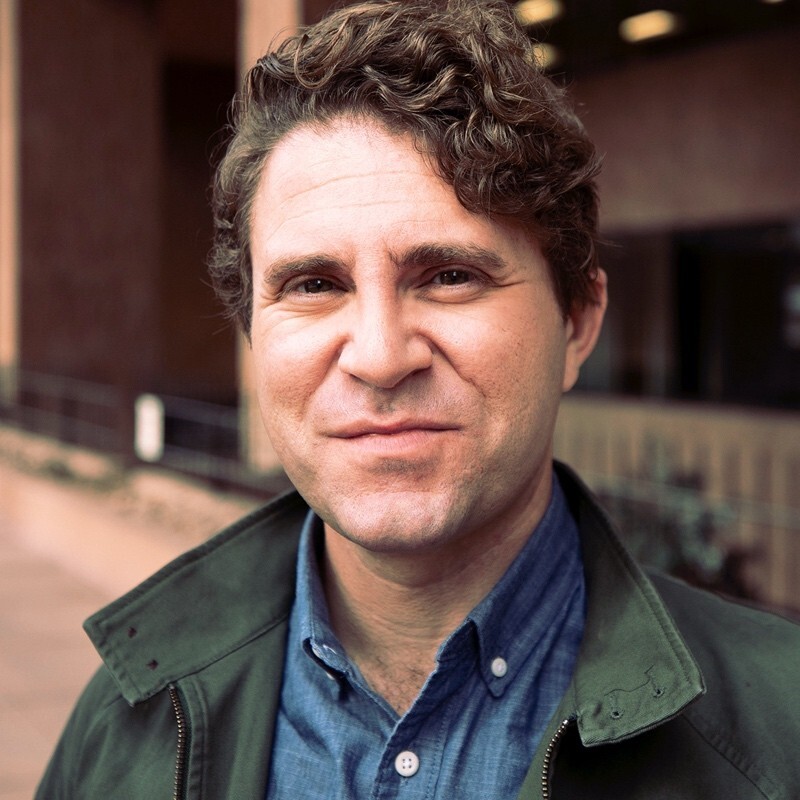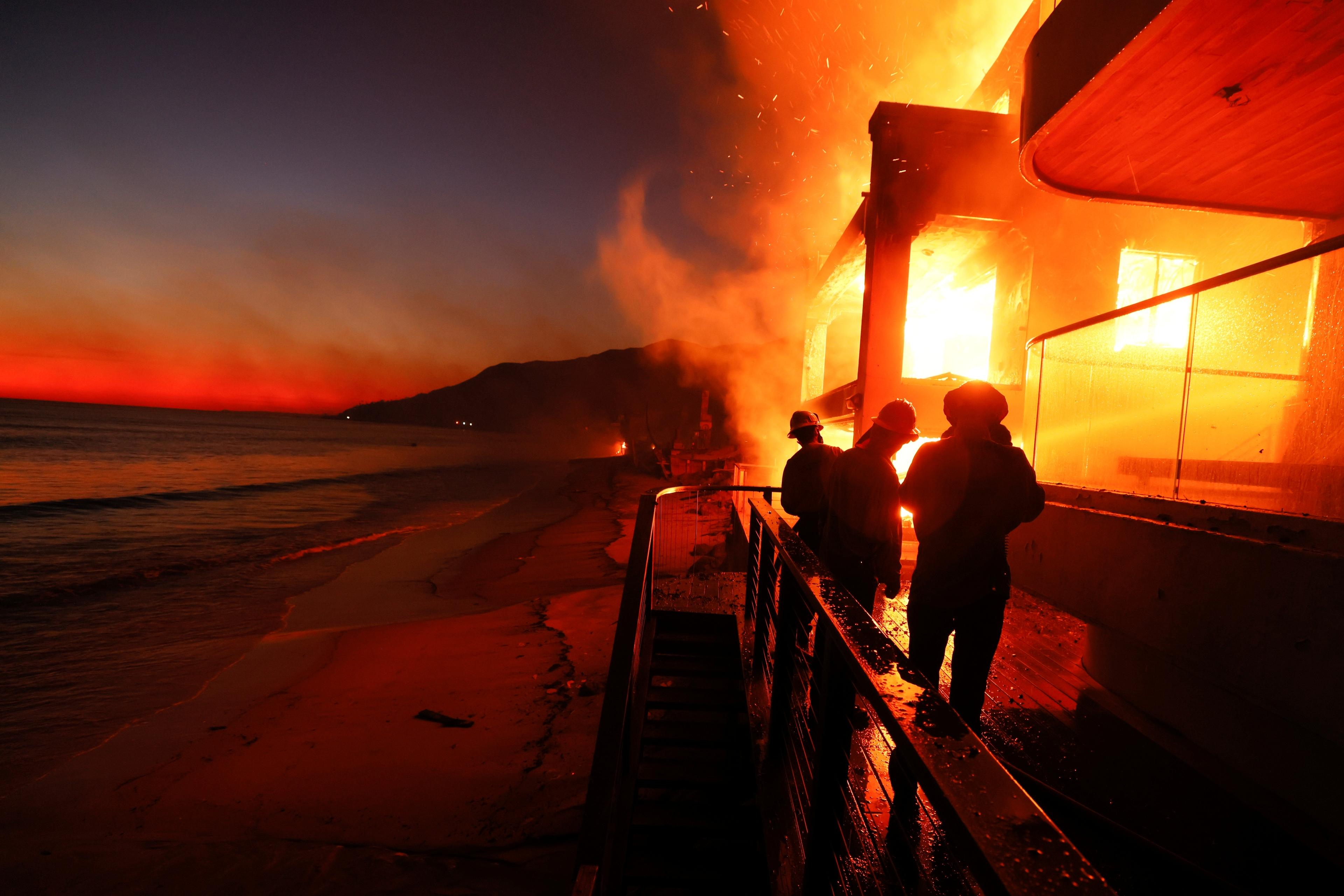
Updated on Thursday, Jan. 9, 2025, at 2:07 p.m.
Several firefighting engines from multiple agencies across Colorado are set to arrive in California today to help battle back raging flames in four separate fires across Los Angeles.
Gov. Jared Polis addressed their arrival Thursday in his State of the State address.
“I'm proud that Colorado is now sending critical firefighting resources including multi-mission aircraft, fire engines, and firefighters to California as they face their devastating fires,” he said.
A state of emergency remains in effect for the region as the Palisades, Eaton, Hurst, and Sunset fires rage on. More than 1,800 firefighters are already on the ground, and California Gov. Gavin Newsom has sent an additional 7,500 crew members and emergency personnel to protect local communities.
The flames are being fanned by a destructive windstorm that reached hurricane speeds, carrying embers dozens of miles away. Fuels in the famous Hollywood Hills and Malibu regions are sparking easily due to severe drought affecting the area.
As of Thursday afternoon, the death toll from the fires stands at five people. Thousands of residents are still being evacuated, and an unknown number of homes have burned. Tens of thousands of others are currently without power.
Eyewitness accounts have described scenes on the ground as apocalyptic.
Preliminary estimates from AccuWeather show the damage could be as high as $57 billion. If the estimate is right, it could make this the costliest wildfire event in U.S. history.
Colorado firefighters hope to support exhausted local crews
Tracy LeClaire, with the Wildland Management Section of the Colorado Division of Fire Prevention and Control, confirmed five engines were ordered to the blaze from Hartsel, Southern Arkansas, Four Mile, and Stratmoor Hills Fire Protection Districts, along with Castle Rock Fire Rescue. Each engine has between three and five crew members who will assist with containment.
Once they reach the California border, crews will fill up their engines with water in locations unaffected by the fire to avoid draining local resources.
The Division of Fire Prevention and Control also sent a multimission aircraft to help from above.
Stratmoor Fire Chief Shawn Bittle said orders to respond to the disaster came down Wednesday morning.
“Our crew is always vigilant and they want to make a difference and try to help in their small way to get that fire under control and stop the property loss, stop the loss of life. I can only imagine how exhausted those firefighters must be in California right now, fighting days on end without any outside relief,” Bittle said. “It'll be good for our firefighters to contribute to the cause, gain valuable experience and also help the citizens of California.”
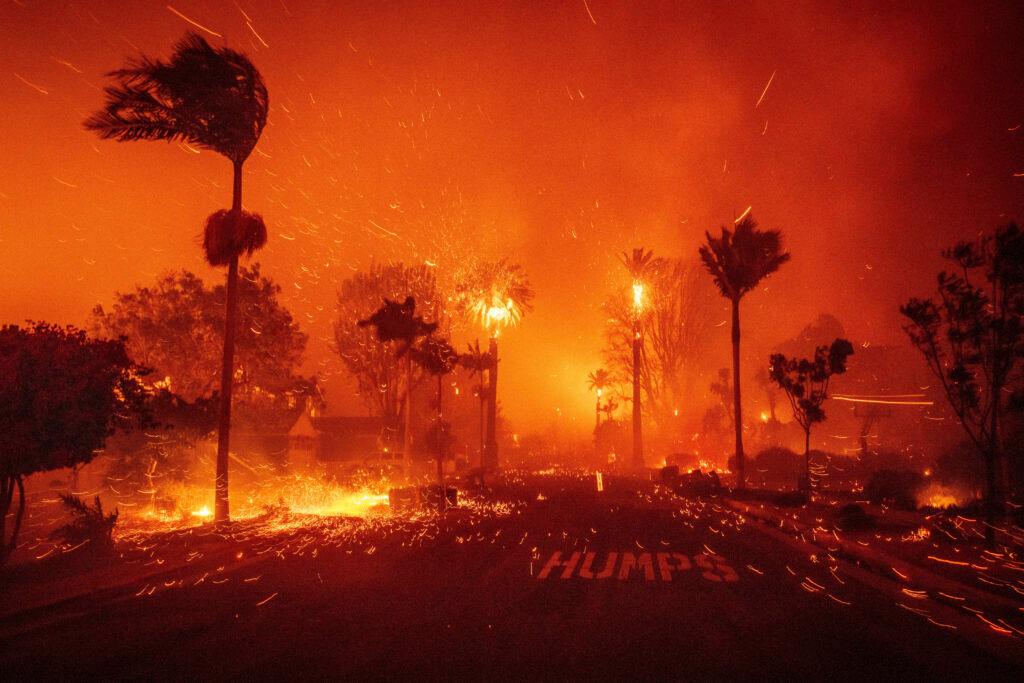
There are 39 additional engine and crew teams rostered in Colorado and ready to go in case they’re needed. According to LeClair, crews can stay for 14 days with the option to extend to 21 days if necessary.
Chief Bittle said depending on how long the fires rage on, they may do a crew swap at the end of the initial two-week assignment.
“We do have firefighters that are waiting to deploy should those firefighters need relief at the scene. We will fly those firefighters out and then fly the other firefighters back here to Colorado Springs.”
What is it like on the ground?
The Colorado crews arriving are all trained in wildland firefighting, which requires different skills and techniques than urban fires that are typically contained to some degree.
“It can certainly be a little terrifying,” Bittle said. “Unlike a structure fire where it's got four walls, it's got a ceiling, a wildfire is all around you. It has no boundaries, it has no restrictions. Especially in a wildland-urban interface, it can be even more complicated because as you're going to fight the fire, you have residents leaving and [the structures] could actually be blocking the path and the growth of the fire until it jumps over a hilltop and it's right on top of you.”
Bittle called fire a living, breathing thing. He said the front lines of a blaze like this create an atmosphere that is high pressure and high risk.
“The sound from the fire advancing and consuming fuels can be as loud as a freight train,” he said. All that noise can mean it’s difficult for crews to communicate. “Your head definitely has to be on a swivel. Your situational awareness has to be top-notch.”
Bittle believes the loss experienced in fires like this often gives people the push they need to either become a wildland firefighter or find other ways to help with the devastation.
“People feel the calling to serve. You can enter into the fire academy, you can learn how to be a wildland firefighter or you can be a part of the Fire Corps program where you have an opportunity to work alongside the firefighters,” he said.
The fires are currently burning across more than 28,000 acres in LA with zero percent containment.
Editor's note: Updated with comment from Gov. Polis during his State of the State address on Thursday.

